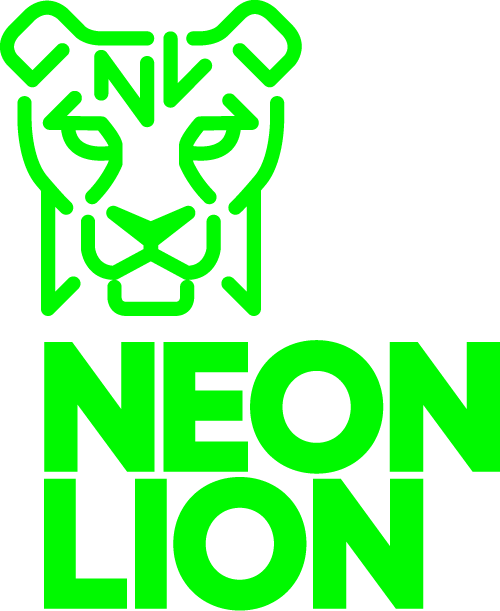Client First Is Table Stakes
Saying “client-first” like it’s a strategy has always struck me as odd. It’s like saying you have a “breathing strategy.” If you’re not putting the client first, what the hell are you doing? It is so fundamental to any healthy, successful, and long lasting business relationship, that I think it goes best without ever being said. Which leads us to the great irony of this blog, I suppose.
This business runs on trust. And trust isn’t earned by slick decks (even though I love focusing in on one of these - soothes my nasty little perfectionist streak so well!) or the illusion of busyness. It’s earned by doing what you said you’d do. And by caring about your client’s business like it’s your own. Here are some concepts I have tried to apply to client relationships throughout my career and here at Neon Lion.
You are not a vendor.
The second you become a vendor, you’re replaceable. Keep relationships from feeling, or becoming, transactional. Replace it with collaboration. Think about co-creation and challenge your client too – don’t nod along or hide under the coats just to keep the retainer, because in the long run, it might not work. Get your team invested in the outcome, not just the output. Again, data driven insight makes this concrete, measurable, and incredibly potent for the work your team does in digital spaces. Don’t be afraid to push back if the brief is wrong. Question a funnel if the conversion logic is off. Clients don’t just appreciate this kind of honesty — they crave it. Because it’s rare. And it builds a real partnership, not just another project.
Good ideas, meet good data.
One big shift—one that ultimately benefits clients—is the rise of benchmarking and analytics as essential parts of creative work. You have to prove what you made actually moved the needle. Back in the days of million-dollar print ads in Wired, success was mostly vibes and subconscious brand association. Still important today — but now they’ve got competition from view counts and comment threads. Now, creative teams and digital strategists need evidence. And I believe if we follow sound fundamentals, stay thoughtful, and build from a deep understanding of a client’s goals out of the gate, the positive data will follow. In spades.
Empathy is the secret sauce.
Before you open a deck, touch a wireframe, or fire up a paid campaign, listen. Not just to the brief, but to the real problem under the problem. Because sometimes the ask is “we need brand awareness,” when the truth is “we’re terrified of our competition, of being irrelevant in two years.” Try to listen between the lines. Ask weird, off kilter questions. And sit with silence. Wait, let them think, and let the client do most of the talking when you are trying to solve a problem together. Understanding what keeps a client up at night is the key to doing meaningful work.
Details Matter. Execute them well.
Ideas are easy. Execution is the battlefield. Yeah, perfectionist speaking here. I get that sometimes, perfect is the enemy of good. But is it the enemy of great? It is better to ask for an extension (again, transparency at work) than to ship something out the door that is half-baked. Part of leading a successful, fulfilling life is embracing the dirty work. It’s not fun. Work shouldn’t always be, can’t be. So debug landing pages at 11 p.m, measure and fine tune your ad campaigns ruthlessly. Write, rewrite, and obsess. It’s ok. That 1% makes the work sing. Thats where it starts to hit someones subconscious, starts to separate from the pack. Why someone loves something and feels good about a brand, without knowing why.
Every email, ad, headline, color, and piece of typography is an opportunity to either build or erode trust. Take that seriously. Because every client relationship is a fragile ecosystem built on an accumulation of details.
Stay human.
Don’t be a dead-eyed yes machine that sends bills. Be honest. Be weird. Swear sometimes if you want. Admit when you’re wrong, apologize, say you will learn from it and do better, and mean it. Because the best work comes from human connection — not forced professionalism or AI-generated banter. Make sure your client doesn’t just know you as a strategist, designer, or media buyer. Let them know you as a person. In today’s ice-cold robotic digital age, that humanity is an edge.
Client first doesn’t mean client-always-right.
Putting the client first doesn’t mean coddling them. It means protecting them from bad ideas — including their own. If what they are asking you to do doesn’t represent, or even will hurt the brand, it is your duty to say so. If the messaging is off, try and fix it by presenting new, better options — even if the CEO wrote it. Because you are not here to keep the peace. You are here to make progress. Serve the mission, not the ego.
After years of building these messy, complex, deeply rooted partnerships — the kind that eventually blossom into something great — I’ve come to believe “client-first” isn’t about smiling and saying yes. It’s about showing up with trust, rigor, empathy, and the guts to speak the hard truth when it matters most.

